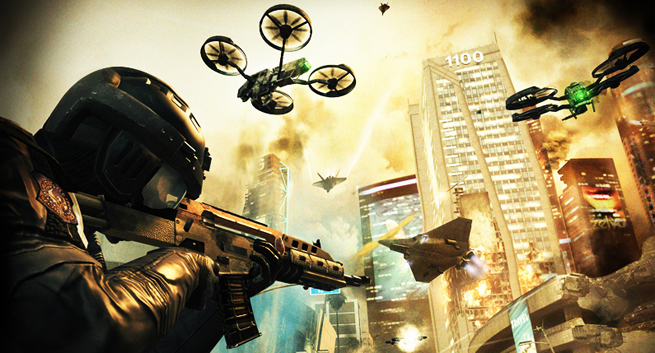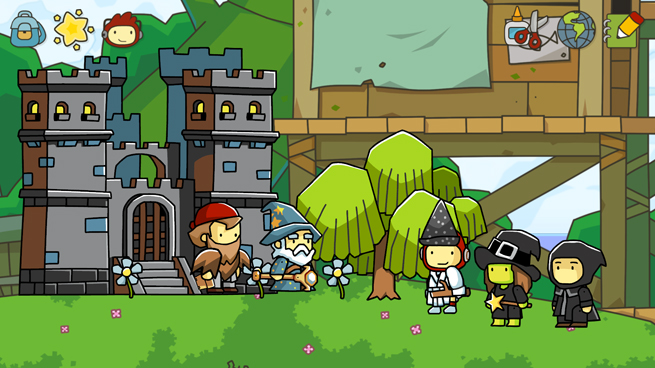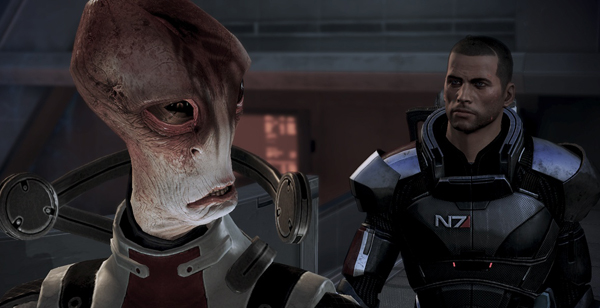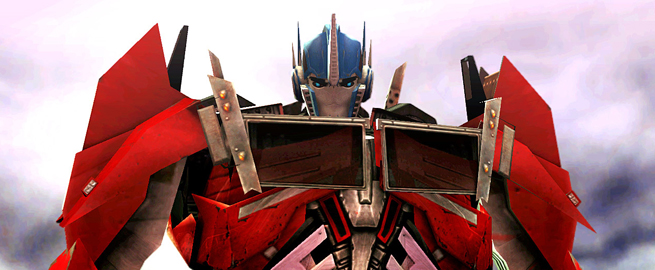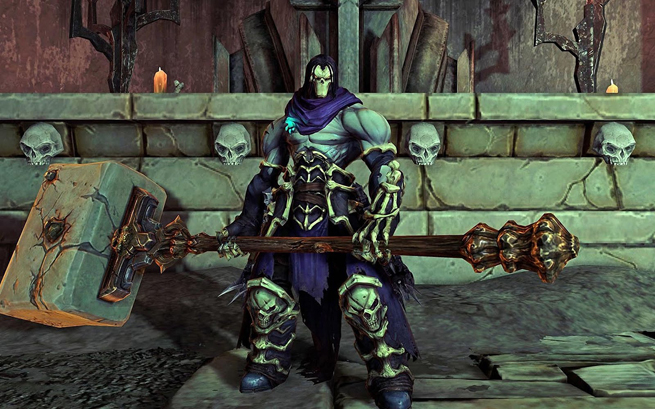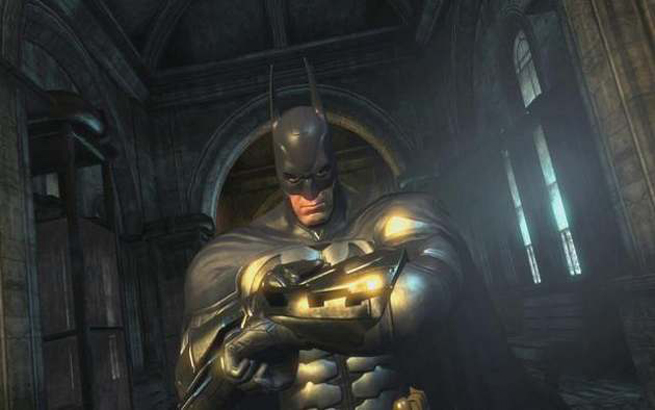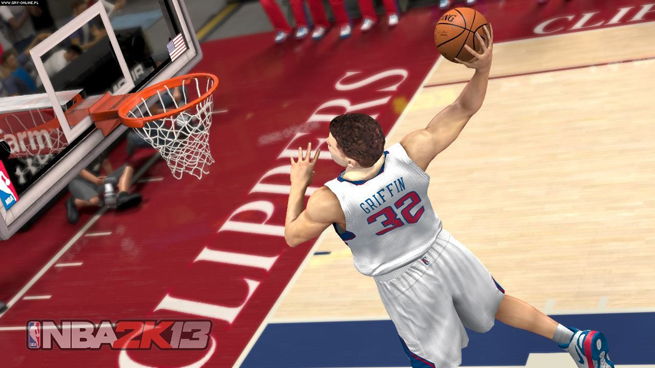While some people tell us that the Wii U’s launch lineup is “the best in history” and “it is not debatable,” we prefer to take a “trust but verify” approach to the subject.
Like it or not, a significant portion of the Wii U’s catalog consists of ports from months-old titles, backed by developers promising that Nintendo will feature “the definitive editions” of their games. I think that’s worthy of debate. And their general quality should absolutely be verified before anyone spends money on them.
We don’t need to give every Wii U game a complete review — several have gotten that already on other systems — but we do want to see how both ports and original releases stack up on the new hardware. After all, the Wii U’s big conceit claims it isn’t just what you play, but how you play it that makes all the difference.
Naturally, some games get that. Some don’t.
Unless otherwise noted, all games below are currently available. Click here for all of GamesBeat’s Wii U launch coverage.
Call of Duty: Black Ops II
You might think it’s the biggest game of the year, but to me, Black Ops II feels like the biggest surprise of the year. I haven’t despised a Call of Duty game more than Black Ops since World at War — not coincidentally, all three were developed by Treyarch. But I found myself loving a lot of what Black Ops II threw at me. The (branching!) story, characters, level design, and flow clicked into place in ways I haven’t seen from this franchise in years. Oh, you get some fairly sharp interruptions with forced, clumsy, real-time-strategy missions, but otherwise it’s solid entertainment written in capital letters.
The Wii U implementation, however, doesn’t recommend itself over any other, and it often finds ways to drive away the dedicated Call of Duty players Nintendo wants to attract. Compared to the other versions, it’s visually diluted; transferring your game to the Game Pad’s 480p screen waters down the graphics more. It’s cool to get the full CoD experience on a handheld device (even one tethered to its console), but that’s as far as anybody went to fit this game on Nintendo’s hardware. Those RTS levels seem like a natural for its touchscreen interface, but nope … Activision didn’t bother, sticking to the same awful controls you’ll find on the Xbox 360 and PlayStation 3.
Worse, back in first-person-shooter mode, the Game Pad (and Pro Controller) face buttons reverse all the familiar command inputs from past games. That’s more than distracting in the campaign and intolerable in multiplayer. I can’t believe anyone will take the time to retrain their reflexes just to satisfy Nintendo’s conceits.
Those coming in fresh will get a seriously good game with a few detractions they likely won’t even notice. Veterans might want to stick to more familiar ground. And hey, maybe the multiplayer won’t end up such a grindhouse with all the career shootists happily plugging away on other platforms.
Scribblenauts Unlimited
I’ve been in love with the idea of Scribblenauts since publisher Warner Bros. Interactive stuck it on two tiny kiosks against the very back wall at E3 2009. It came out of that trade show a major player. The finished games themselves always faltered in some way — sometimes very badly — but now I’ve got a Scribblenauts I can really recommend … one that actually gives you the freedom the series has long promised.
The basic game remains unchanged. As rooster-hat-wearing Maxwell, you tap out words to create items and people meant to solve puzzles and problems. Half the fun lies in finding out how extensive and outrageous Scribblenauts’ vocabulary is (short answer: very, now including a number of classic Nintendo characters) and applying wacky solutions to sometimes mundane problems. The ability to modify words (big, radioactive, rotten, etc.) returns, but a robust item creation suite kicks the possibilities into orbit.
More importantly, Scribblenauts finally moves away from quick-hit, one-screen puzzles and a linear progression that felt more like a series of cages than anything else. Now Maxwell moves through an open world, leaving you free to go anywhere at will and engage whomever you want, however you want. While the tasks you find aren’t always terribly interesting, you can usually make them interesting by applying as wild a solution as you can devise. Sometimes my experimentation revealed the limits of Scribblenauts’ imagination, but it’s easy to simply move on and see if a flying robot dinosaur works better in other situations.
But despite being a launch title for a brand-new console, Scribblenauts still never truly leaves the small screen. I played wide swaths of the game without once looking up at my television, doing everything right from the Game Pad’s touchscreen. That makes Unlimited, despite its more open, more expansive nature, feel every bit as much a mobile-platform game as its predecessors.
It’s also possibly the best party game on the Wii U. Encourage everyone in the room to shout out suggestions for things to create, and you’re in for a evening of doodling up some amazing disasters. Either way, alone or in a crowd, Scribblenauts Unlimited gives you a lot to write home about.
Mass Effect 3: Special Edition
All the controversy and bad blood generated by Mass Effect 3’s much maligned ending can make you forget what an amazing game it is. Y’know, until the last 15 minutes or so.
The “Special Edition” port for the Wii U serves as a solid reminder. The concluding chapter of Commander Shepard’s war against the world-ending Reaper threat makes a decent jump over to the Nintendo console, but not without hiccups. Regardless of which controller you’re on, some controls feel a bit sticky — aiming, for example. Melee attacks are mapped to a tough-to-reach button, and integration with the GamePad feels slight. You get a bland radar map (which seems like a cliché in the making) or the power wheel with hotkeyed special attacks for your squad commands. Both of these assume you’re fine with taking your eyes off the TV during a firefight. I wasn’t.
All the campaign’s downloadable content and the “improved” extended ending come standard, so you’ll get plenty of mileage though (perhaps tellingly) not all the multiplayer updates made it in. The graphics go down a notch or two, but they started pretty damn high. Newbies won’t notice a thing. And really, sans all the additional content, nobody else needs to commit to this edition over any other.
If you’re solidly Nintendo Core and haven’t bothered with Bioware’s sci-fi epic until now … well, Mass Effect 2 would actually be the best entry point. But since that’s not available, get Mass Effect 3 and enjoy the hell out of it. Several emotional crescendos won’t register as deeply, but neither will the ending feel so abysmal a letdown. Perhaps that’s a fair trade-off. Certainly, the 25 hours of gameplay before that will be time well spent.
Transformers Prime
Sometimes, I feel for developers who get stuck making licensed games. It’s not hard to imagine a bright, ambitious programmer or artist with dreams of awesomeness breaking slightly after working on something like Transformers Prime for the Wii U. But then I’m forced to play it for hours, and my sympathy bleeds away to cold malice.
Based on the most recent CGI iteration of a franchise that almost always worked best as toys than anything else, Transformers Prime couldn’t be more paint-by-numbers if the art direction had completely gone for a coloring-book aesthetic. You jump between various Autobots to battle cannon-fodder Decepticons, and a painful sense of sameness creeps in by the third level.
For starters, the characters are completely interchangeable. Should Arcee play exactly the same way as Optimus Prime? Given one’s a motorcycle and the other’s an 18-wheeler truck and the most powerful Autobot around, I’m thinking not. Level design comes down to a series of locked-room arenas, which is about as lazy as it gets. You’ve got ranged weapons, but that’s just for show. This game’s a brawler, period. You’ll use a transform-to-robot power slam move ad infinitum, mainly so the game doesn’t take any longer than absolutely necessary. Oh, and let us not forget one of the worst cameras in recent memory. Run in circles near any flat surface and it suffers a complete mental breakdown.
Games of this time typically get two things: a ridiculously short production schedule and an inadequate budget. It’s probably safe to say enough good people suffered in its creation to satisfy whatever dark gods profit by such things. No need to add your own pain to that litany.
Darksiders II
If you ever wanted to play God of War on a Nintendo system, well, tough. But now you can jump into Darksiders II, and it’s almost the exact same thing right down to the climbing animations. Just substitute Greek mythology for some weird-ass universe where Death itself sets out to clear its brother, War, of charges involving the genocide of humanity.
Who has the authority to prosecute the physical embodiments of death and war for essentially doing their jobs pretty damn well? If you’ve got to ask, it’s probably best just to skip all the cut-scenes. Don’t ask why Death has to buy things at stores with money, either.
So let’s jettison the reasons entirely and get down to it: Darksiders II can definitely keep you occupied. Call it sturdy rather than exceptional. A huge open world doesn’t offer a lot to do, and actual missions frequently come down to detour-filled fetch quests interrupted by slash-dodge beatings and punctuated by several fairly awesome boss fights. The majority of the game might be crafted on Kratos, but developer Vigil Games also shoehorned in RPG-style skill trees, neo-Prince of Persia platforming (complete with instant rescues from falling to your doom), Zelda-like exploration, a hint of Overlord minion control, and some Portal-ish puzzle solving. No third-person, cover-based shooting, I’m sorry to say.
Outside of that whackadoodle story — which we’re skipping past, right? — you won’t find a lot that Darksiders II can genuinely call its own. But it still kinda works. A good mix of fast and heavy weapons let you dole out the pain in fun ways, though 20-30 hours of it seems a bit over-generous. The Wii U Game Pad offers the standard options and not much else … mainly fingertip inventory that isn’t always responsive to your fingertips and a shake-to-dodge function that makes an already fussy camera even fussier. Even with all the additional DLC included gratis, I can’t recommend it over a lot of the games it emulates, but few of those are available on the Wii U. Taken on its own, Darksiders II serves up a heaping helping of cathartic, if flawed, violence. Hey, what else would you expect from Death?
Epic Mickey 2: The Power of Two
One of the big appeals of 2010’s Epic Mickey had to be its controls. After a long drought of casual fare and waggle-fests, finally we got a game that used motion controls in a smart, responsible manner. Cast as Mickey Mouse and armed with a magic paintbrush, we healed or destroyed a broken world with a wave of a Wiimote and vanquished the mad, mad, mad, mad, mad scientist.
I say all this so you’ll fully appreciate what an epic disappointment Epic Mickey 2 is. Bad enough that it relegates the Game Pad screen to an interactive map and calls it good, but the actual controls feel chunky, slow, and poorly thought out. Using paint to create and thinner to destroy still carries the same appeal, but aiming your brush with thumbsticks (as opposed to the Wiimote) rates right up there with threading a needle while riding a rollercoaster. Mickey and his brain-vacant sidekick (and/or Player 2 character), Oswald the lucky rabbit, move like they’re trapped in a Jell-O mold. Even the control map contains huge lapses. “Jump” and “open door” occupy the same button. Just try accessing a new area without accidentally leaping into the air instead.
And just to top it all off, let’s have a camera that hides your character behind every convenient object and a stone-stupid co-op A.I. companion who’s vital to your adventures. Oswald loves to chirp “I know what to do!” but rarely does it without much prompting. At one point, I just took to hitting him. It seemed like the best service he could provide. Worst of all, Epic Mickey 2 is a musical. A bad one.
Don’t even consider playing Epic Mickey 2 alone — a human controlling Oswald might actually know what to do — and even then don’t be surprised if you feel like the test subject in a scientific experiment gone horribly wrong. Maybe next time, Pixar can swoop in and save the day. Again.
Ninja Gaiden 3: Razor’s Edge
Full disclosure: I hated Ninja Gaiden 3 with a capital H when it originally released last March for the Xbox 360 and PlayStation 3. I even made a fairly decent living off the malice I directed at it. So when several people told me the developers at Team Ninja had listened to all the criticism and repaired its travesty, I felt my skepticism was rather justified.
After playing Razor’s Edge, I still do. The Wii U port drops the original (and insane) opening scene and goes right into the button-mashing bloodfest. The combat feels a lot more forgiving this time; you still spam the attack buttons, but now a lot more people die a lot faster as a result. That misses the point of a Ninja Gaiden game, and the frustrating, pedestrian level design sadly made the transition fully intact. Menus for weapon selection, upgrades, and magic Ninpo attacks live on the GamePad’s touch screen, where you must hunt for them instead of playing the game itself. A disingenuous camera also returns, and it still decides which rocket-firing enemies you do and don’t need to see. Simply awful.
I can tell that Team Ninja made several changes under the hood, and it’s to the studio’s credit that it responded to fan outcry. But Ninja Gaiden 3 is a sow’s ear. Did anyone really think they could turn it into a silk purse?
Batman: Arkham City: Armored Edition
The very first thing you’ll notice when you load up the Armored Edition of developer Rocksteady’s masterful sequel is an embarrassing amount of artifacts around just about every object on the menu screens. Even if you generally gloss over such things, you can’t avoid it here.
Fortunately, the game itself calms things down a bit. The Armored Edition might not be quite as pretty, but the solid gameplay and Bat-badassery remain intact … if not slightly enhanced. Your new bat-armor absorbs kinetic energy during your many, many fistfights; when it maxes out, you can unleash hell on everyone looking at you funny. It’s not a weighty addition, but not an offensive one, either.
Integration with the Game Pad takes getting used to if you’ve played Arkham City before, particularly when it comes to scanning clues via an “augmented reality” view. But if, like me, you got sick of constantly referring to the game’s map for reference and directions, having it always available on the touchscreen — where you can tap icons and set waypoints with ease — makes this version of Arkham City stand out. Would I call it the definitive edition? Not especially … but I’ll have trouble going back to the other versions.
NBA 2K13
It’s probably wrong that I get a chuckle out of seeing “executive-produced by Jay Z” right below NBA 2K13’s logo. I don’t expect he spent more than five minutes rolling through the production offices without ever stopping.
But J Hova’s game on the Wii U pretty much stands as a straight port from the original release without any changes honestly worth calling out. You can play from your TV or the GamePad screen, but that’s about all 2K Sports did to fit their franchise on Nintendo’s new hardware. The menus remain as confusing as ever — when’s the last time you saw a menu tree with a help button to point the way? — but if you’re in the mood for a little roundball, good luck finding a pickup game as deep and satisfying as this. Putting special moves on the right stick takes me back to the good ol’ NBA Jam days as do the wildly improbable, MTV-friendly celebrity-player options. Impressively detailed character animations might even fool a few eyes into thinking you’re watching a real game … from a distance, anyway.
The publishers provided GamesBeat with copies of these games for the purpose of these reviews.
VentureBeat's mission is to be a digital town square for technical decision-makers to gain knowledge about transformative enterprise technology and transact. Learn More

